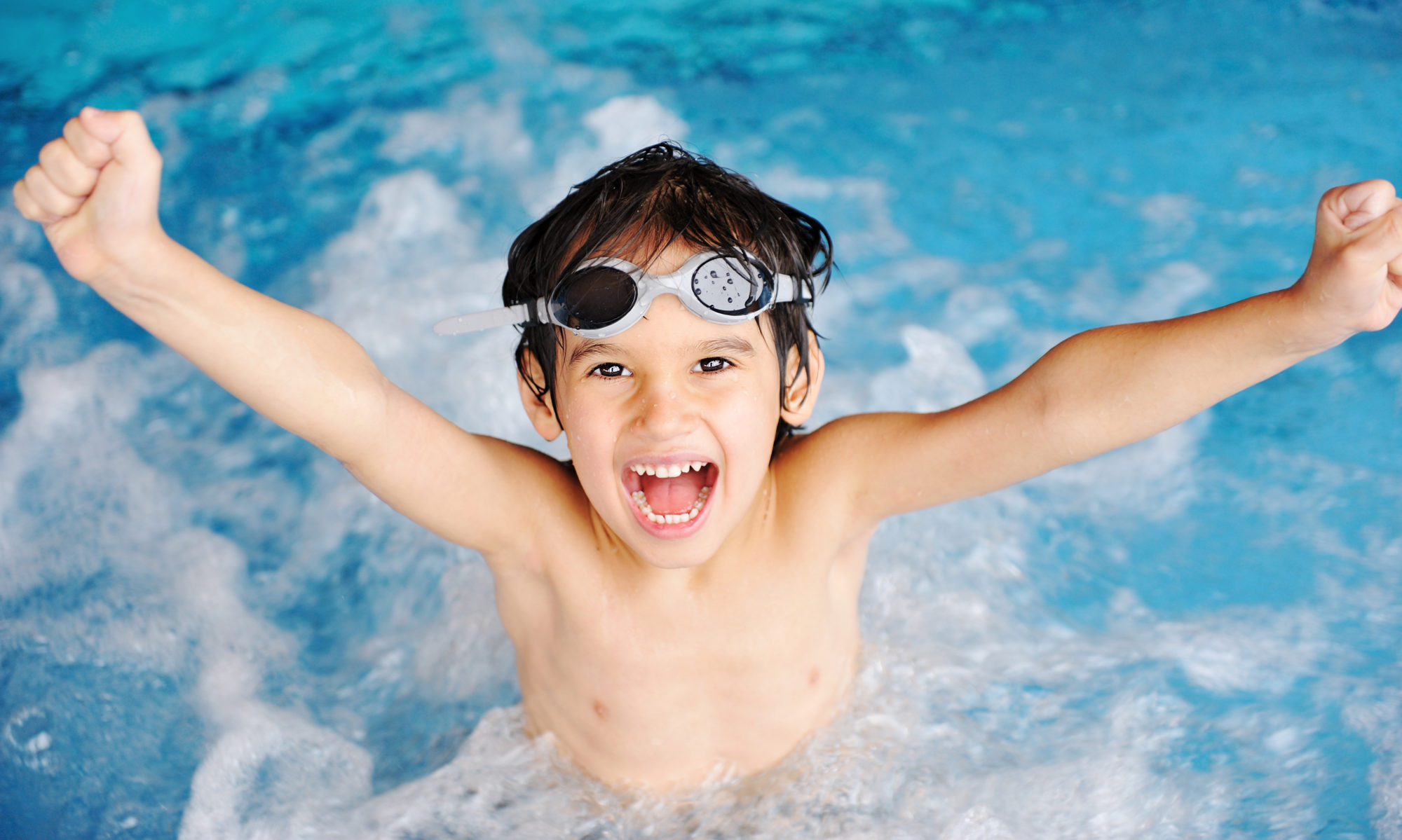The front crawl has to be the mother of all swimming skills. It’s the most efficient way to move your body on the surface of the water. It’s a complex stroke. Adults work for years to become proficient at it. Entire books have been written on it. Follow these steps to teach your kids the front crawl.
The parts of the crawl to focus on are arm movement, leg movement, torso movement, breathing, and timing and synchronization of movement.
The First Stage of Teaching the Front Crawl
By this point, your child has the advantage of having learned to put his head under water, to kick, to streamline his body position, and to breathe when he needs to. All of this is the foundation for starting to learn the front crawl. (If you haven’t taught your kids those foundation skills, do that first.)
Body Position
The work kicking in streamline position has prepared your child to keep his body horizontal and his head in line with the rest of his body while he swims. This is the necessary starting point for the crawl. If your child is still holding his body closer to vertical or mostly horizontal but with his head lifted up when he’s swimming, keep practicing the streamline position until that’s completely comfortable before you start to work on the crawl. It’s better to add more swimming lessons devoted to fundamental swimming skills than to stress everybody out by rushing ahead to learn the front crawl just because it’s so awesome.
Moving and Breathing
To start to teach the crawl, ask your child to pull one of his arms from streamline position through the water to his thigh. Have him return that arm to streamline position and then try the same thing with his other arm. Have him practice alternating his arms this way until he feels comfortable with it. He should continue to pop up to breathe during this early practice.
Initially, your child will probably move his arm through the water to return it to streamline position. That’s fine at this stage of learning.
Using Visualization
Have your child visualize reaching for something just beyond his grasp. Since kids tend to revert to dog paddle arms, with everything pulled close to their body, exaggerate the idea of keeping arms long for each stroke. Later, using a bent elbow to allow the arm to spend as little time out of the water as possible will be important. Early on, though, overcorrecting away from the dog paddle is helpful.
One Thing at a Time
At first, your child might have to concentrate so hard on moving his arms that he forgets to keep kicking. Don’t worry about this. After he’s gotten some experience moving his arms, gently remind him to kick. Work on this until your child is comfortable stroking with his arms and kicking continuously.
Expectations
Don’t expect perfection at this stage. (Actually, don’t expect perfection ever—it’s all about having fun and keeping safe.) Just focus on helping your kids get comfortable while you’re teaching and they’re learning this swimming skill.
